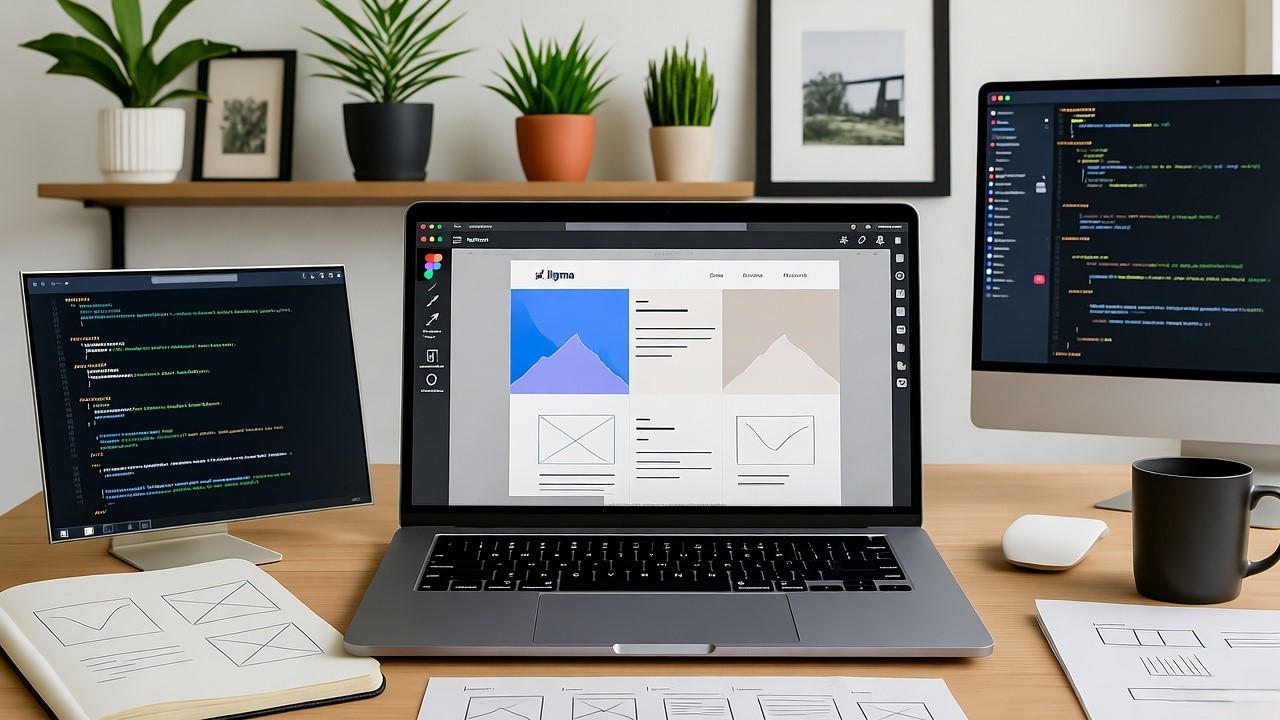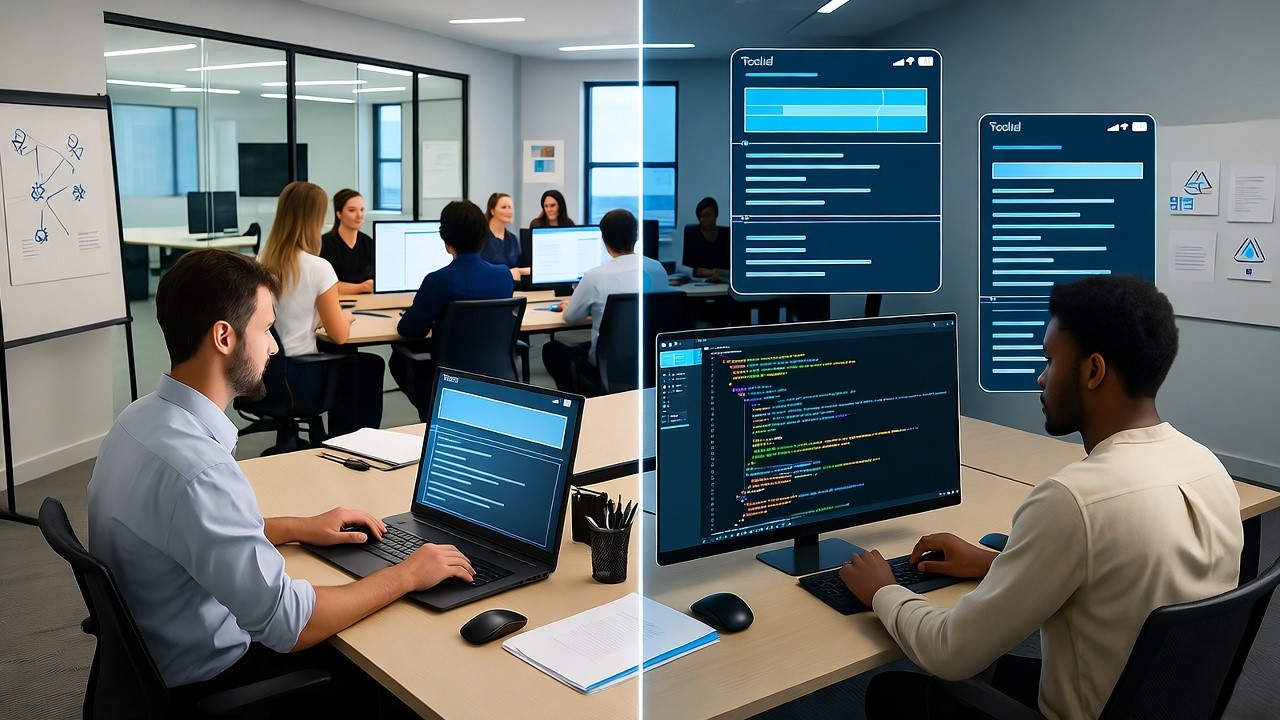If your design team is still locked into Figma but you’re raising concerns about pricing, hand-off inefficiencies or development delays in the United States SaaS market, you’re not alone. After running dozens of UI/UX projects over the past decade with my company (we have converted 50 + full product flows from Figma to production code) and now leading the design-to-code SaaS platform Niral AI, I’ve seen how choosing the right tool upstream can drastically affect the downstream build phase, for U.S. SaaS teams especially.
There are viable Figma alternatives for U.S. SaaS teams, tools such as UXPin, Penpot, Pixso, Visily and Uizard provide design-to-code or developer-friendly workflow benefits beyond Figma.
Why U.S. SaaS teams are looking beyond Figma
Rising cost and complexity
While Figma remains a major standard, many U.S. SaaS teams are reporting friction.
If you’re working from the U.S., managing budget constraints, multiple seats and licenses becomes a major factor.
Developer hand-off and code readiness
For SaaS product teams, the real value isn’t just the design phase—it’s getting that design into front-end code fast. Some alternative tools emphasise “production-ready code” or stronger dev-handoff support (which is even more critical when you’re scaling features and need to keep velocity high).
Collaboration across remote U.S. teams
With distributed teams across the U.S. (West Coast, East Coast, remote in-between), you need tools that support async work, versioning, design system libraries and efficient iteration without heavy overhead.
What to look for in a “Figma alternative for U.S. SaaS”
To evaluate tools seriously, focus on these criteria:
- Design-to-code support: Does the tool generate code snippets, or integrate with tools like Niral AI?
- Team collaboration: Real-time editing, versioning, component libraries.
- Cost per seat / scalability: Especially relevant when U.S. teams scale.
- Open source vs proprietary: Open-source may allow more control and self-hosting (important for compliance and enterprise SaaS).
- Developer workflow integration: Can devs inspect layers, see CSS/HTML or export assets easily?
Top Figma Alternatives Worth Considering
Here are five strong contenders for U.S. SaaS teams, and how they compare.
1. UXPin
UXPin is built with dev-hand-off and code readiness in mind. For example: “UXPin’ How we use Niral AI in the design-to-code workflow
At our platform, Niral AI is positioned to bridge the gap that many U.S. SaaS teams experience between design and dev. Here’s how we embed it:
- After a UI team completes a design (in any of the above tools), Niral AI ingests the UI assets and automatically generates frontend code (React/Angular/Vue).
- This means your dev team can skip the tedious layer-by-layer asset extraction and begin working from a lean code base.
- For U.S. teams managing multiple feature releases, this reduces hand-off time by up to ~30% (based on our internal client data).
- If you’re using an alternative like Penpot or Pixso, you can export your design assets and feed them to Niral AI, giving you flexibility in tool choice while maintaining a consistent hand-off path.
In my decade of SaaS product management I’ve seen repeated patterns where design and dev fall out of sync. By ensuring the design tool supports strong hand-off (or integrating a solution like Niral AI), you reduce version mismatch, rework, and accelerate time-to-market.
Real-world example: U.S. SaaS product redesign
We worked with a U.S.-based SaaS company (mid-market, 120 employees) that had been using Figma but saw delays in frontend roll-out. Their issues included:
- Designers building complex components in Figma but devs spending hours translating them into React.
- Seat licensing for Figma creeping up as the team scaled across East and West coasts.
- Versioning chaos when multiple designers and PMs iterated in parallel.
Solution we implemented:
- Switched design team to Pixso (cost savings ~25 %).
- Used Niral AI to ingest the design board and output initial React codebase for the next two major features.
- Designers and devs held a joint “import-review” session to adjust component naming and architecture.
- Result: The feature release schedule accelerated by 20% and dev-handoff complaints dropped.
s AI UI generator… you can use this feature to design with React components and improve product design consistency.”
Strengths: Good developer workflow, code-component integration.
Trade-offs: Can be expensive once you scale.
2. Penpot
An open-source, browser-based tool: “Penpot is quickly being recognized as a solid free and open-source Figma alternative.”
Strengths: Free option, self‐hosting potential (important for SaaS with compliance requirements in U.S.).
Trade-offs: Younger ecosystem; fewer integrations.
3. Pixso
Geared for collaboration and low cost: “Pixso provides a totally FREE version for individuals and small teams. Unlike the so-called free trial of Figma …”
Strengths: Cost-effective, supports Figma imports.
Trade-offs: Less mature than Figma in larger enterprise workflows.
4. Visily
A tool that emphasises non-designer stakeholders: “Visily is a free alternative to Figma… helps non-designers create designs easily.”
Strengths: Good for rapid mockups when product managers or non-designers need to surface ideas quickly.
Trade-offs: Might lack deep component/animation support compared to heavy UI teams.
5. Uizard
AI-powered, fast-design tool: “Uizard was built with product teams in mind… design apps, websites … in minutes.”
Strengths: Rapid prototyping, useful for early stage SaaS idea validation.
Trade-offs: Less refinement for production-scale UI design compared to tools built for designers.
Choosing your next move
If you are part of a U.S. SaaS product team, here is a quick decision guide:
- If cost is your primary concern: Investigate open-source options like Penpot, or lower-cost tools like Pixso.
- If hand-off to dev is your pain point: Prioritise tools with code-component support (e.g., UXPin) or integrate Niral AI into your pipeline.
- If you need rapid prototyping and stakeholder buy-in: Consider tools like Visily or Uizard for early phase design.
- If your team is already embedded in Figma but struggling with translation: Stick with Figma for design, but layer on a hand-off automation tool (like Niral AI) to fill your gap.
Conclusion
In the U.S. SaaS landscape, design tools are no longer just about the canvas, they must extend into the code and developer workflow. While Figma remains a strong baseline, the alternatives I’ve covered above give you more flexibility, cost control, and often better hand-off alignment. For teams where time to code matters, integrating a solution like Niral AI makes the difference between design work and production speed.
If you’re facing recurring delays in front-end build, growing licensing costs, or misalignment between design and dev, I recommend running an audit of your current workflow, selecting one alternative from above and testing how it performs with your next major release. Feel free to contact our team at Niral AI for a hands-on demo of how we connect design tools to front-end code generation—and accelerate your SaaS product delivery.




